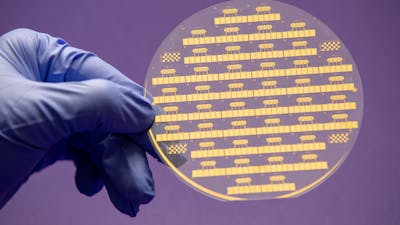- Point-of-care sensor for histamine
- Rapid results in under 5 minutes
- No other point-of-care test to measure severe allergic response is currently available

abbieSense: Anaphylaxis Diagnostic
An electrochemical sensor platform technology that can quickly diagnose anaphylaxis based on histamine levels
Interested in this technology?
Please contact us if you are interested in collaborating on this technology, or if you would like to learn more about our IP portfolio.
Interested in this technology?
Please contact us if you are interested in collaborating on this technology, or if you would like to learn more about our IP portfolio.
The molecule histamine plays a primary role in the anaphylaxis reaction, which is a major cause of illness and death in people with severe allergies. Histamine is a very small molecule composed of only seventeen atoms, making it a challenging target to detect. To date, no diagnostic test exists that can measure histamine levels accurately and quickly enough to confirm when a patient is experiencing an allergic reaction – a lack of knowledge that often costs lives.

The Wyss Institute is developing a novel electronic microsensor that is capable of detecting clinically relevant concentrations of histamine and other small molecules within five minutes, offering hope for the 15 million Americans who suffer from allergies. The microsensor is equipped with a first-of-its-kind nanocomposite coating that prevents the non-specific accumulation of blood components on the sensor surface and retains over 80% of its electronic sensitivity, even after being stored for a month in whole human plasma.
We want to develop an anaphylaxis detection system that is small, portable, integrated, and easy to use, so that patients with allergies can be alerted as soon as an allergic reaction starts and seek life-saving treatment immediately.
In addition, this same histamine detection technology can be used in the hospital or doctors’ offices to quantitatively sense patient responses to allergens during desensitization procedures. The Wyss’ electrochemical sensor platform technology also could be applied to detect a broad spectrum of biomolecules that would be useful for medical applications that extend far beyond anaphylaxis or allergy.
This technology is part of the Wyss Institute’s Project ABBIE, and is undergoing further development.
Interested in this technology?
Please contact us if you are interested in collaborating on this technology, or if you would like to learn more about our IP portfolio.